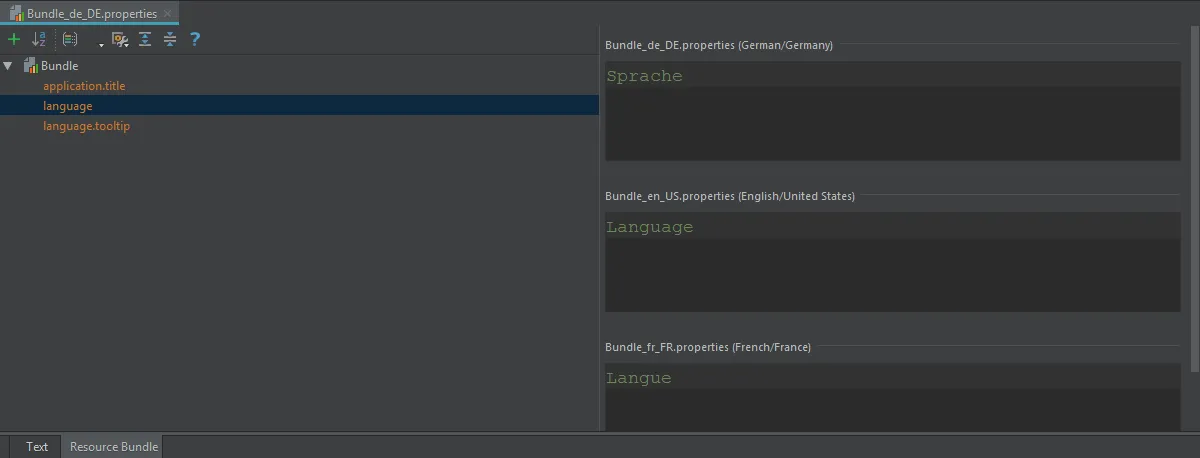我尝试在我的Swing应用程序中运行时更改语言环境(Locale)。
但是我无法弄清楚它应该如何工作,或者是否有一个最佳方案?
我只能想到两个选择:
- 重新启动应用程序,不是最好的用户体验。
- 创建一个本地化管理器,可以注册/注销组件,在更改时只需迭代所有组件并更改文本。
1和2都感觉很尴尬。
其他信息:
- 目前方向不是目标。
- 应用程序被混淆。
示例:
LocRes_en.properties:
text1 = 英文文本
LocRes_ja.properties:
text1 = 日文文本
ChangeLocale.java:
import java.awt.EventQueue;
import java.awt.FlowLayout;
import java.awt.event.ActionEvent;
import java.awt.event.ActionListener;
import java.util.Locale;
import java.util.ResourceBundle;
import javax.swing.JButton;
import javax.swing.JFrame;
import javax.swing.JLabel;
public class ChangeLocale {
private JFrame frame;
public static void main(String[] args) {
EventQueue.invokeLater(new Runnable() {
public void run() {
try {
ChangeLocale window = new ChangeLocale();
window.frame.setVisible(true);
} catch (Exception e) {
e.printStackTrace();
}
}
});
}
public ChangeLocale() {
initialize();
}
private void initialize() {
frame = new JFrame();
frame.setBounds(100, 100, 450, 300);
frame.setDefaultCloseOperation(JFrame.EXIT_ON_CLOSE);
FlowLayout flowLayout = new FlowLayout(FlowLayout.CENTER, 5, 5);
frame.getContentPane().setLayout(flowLayout);
JButton btnChangeLoc = new JButton("更改语言");
frame.getContentPane().add(btnChangeLoc);
final JLabel lblLabel1 = new JLabel("新标签");
frame.getContentPane().add(lblLabel1);
Locale.setDefault(new Locale("en"));
ResourceBundle r = ResourceBundle.getBundle("LocRes");
lblLabel1.setText(r.getString("text1"));
btnChangeLoc.addActionListener(new ActionListener() {
public void actionPerformed(ActionEvent e) {
Locale.setDefault(new Locale("ja"));```html
ResourceBundle r = ResourceBundle.getBundle("LocRes");
// 手动遍历所有组件 :(
lblLabel1.setText(r.getString("text1"));
//
}
});
}
}
```


